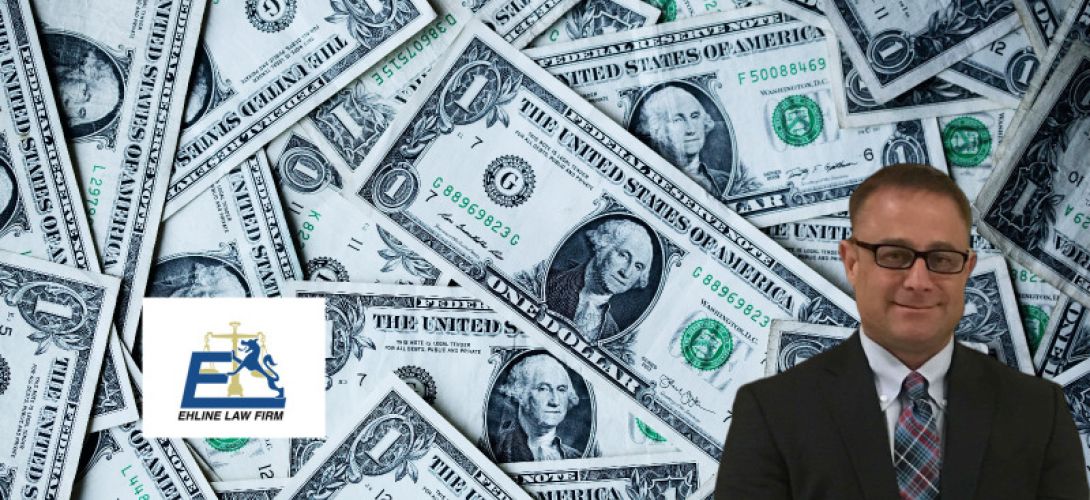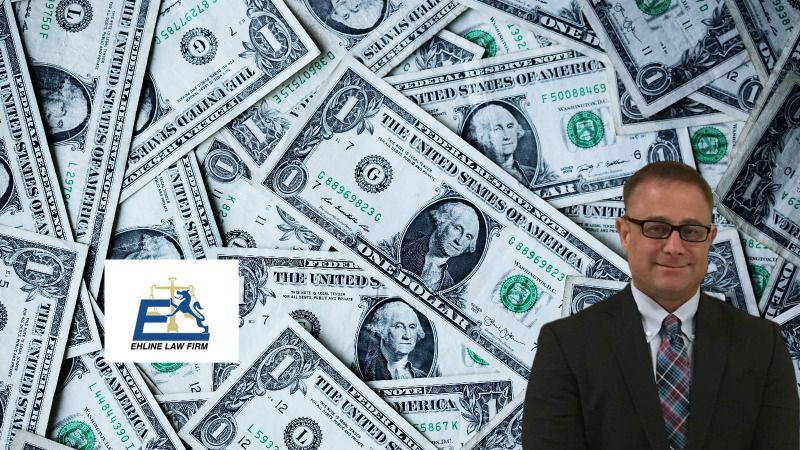
California and the Collateral Source Rule

California and the Collateral Source Rule
Other states have their own variations of California’s collateral source rule. In most cases, the rule remains a traditional common law principle that prohibits the admission of evidence in a civil lawsuit that shows the victim has already received compensation from a source other than the defendant. The rule aims to prevent defendants from escaping liability by claiming that the plaintiff has already been compensated for their injuries from another source.
The underlying principle behind the collateral source rule is that the plaintiff, as an insured individual, has paid insurance premiums to obtain coverage. Therefore, any funds provided by the insurance company to cover the plaintiff’s expenses should be considered as reimbursement to the plaintiff rather than benefiting the insurance company directly, which is a windfall to the insurer because they get premiums from the victim and get paid back.
This concept applies to various forms of insurance, including health insurance and auto insurance. The idea is that the plaintiff, who has been paying insurance premiums, should not be penalized or deprived of the full compensation for their payable damages simply because they have insurance coverage.
Evidentiary Rule
Under the collateral source rule, the defendant in a personal injury case is generally not allowed to introduce evidence of the plaintiff’s insurance coverage or any payments made by the insurance company. This ensures that the plaintiff can still recover the total amount of damages awarded by the jury or Court, regardless of any insurance coverage or payments received.
But there are exceptions or variations to the collateral source rule based on specific laws in California.
The traditional collateral source rule in California has two functions as follows:
- The first part is evidentiary and prevents the jury from being informed about any compensation received by the plaintiff from external sources, such as insurance providers. This means that if a plaintiff receives compensation for their injuries from an insurance company, that information cannot be disclosed to the jury.
- The second part of the rule is substantive and prevents the reduction of damages received by the plaintiff based on what has already been paid by external sources. For example, suppose the jury awards a plaintiff $100,000 in damages but has already received $50,000 in compensation from an insurance company. In that case, the plaintiff can still recover the total $100,000 awarded by the jury.
In general, California follows the collateral source rule in its traditional interpretation. However, there are two exceptions where a defendant in a personal injury case can introduce evidence that the collateral source rule would typically exclude.
What About Property Damage Claims?
The collateral source rule generally applies to protect property damage cases (a vehicle or other property damaged or involved in auto accidents, homeowners claims, etc.) as stated in the Shaffer v. Debbas case. Under the Helfend v. Southern California Rapid Transit Dist. case, allowing a tortfeasor (the person responsible for the harm) to reduce their liability or avoid payment by taking into account payments made by the plaintiff’s insurance would put the plaintiff in a worse position than not purchasing insurance at all. The payment of insurance premiums would then be seen as providing no benefit to the plaintiff and as against public policy.
This means that the rule prevents the tortfeasor from reducing their liability by considering the plaintiff’s property insurance payments, such as deductibles. The purpose behind this application of the rule is to ensure that the tortfeasor does not receive an advantage or benefit from the plaintiff’s insurance coverage.
Exceptions to The Collateral Source Rule
A few exceptions to the collateral source rule apply against an injured party concerning third-party payments made on their behalf to hospitals and other care providers, especially when dealing with a private health plan.
Medical Malpractice Claims
The first exception applies to such evidence involving medical malpractice lawsuit claims. In these cases, a defendant can present evidence of the plaintiff’s receipt of payments related to the injury, such as Social Security benefits or workers’ compensation covering a disability. Suppose the defendant introduces this evidence in defending against the personal injury claim. In that case, the plaintiff is then allowed to present evidence of any amounts already paid to secure the right to those benefits and services, such as monthly premiums.
Medical Bills in a Personal Injury Case
The second exception involves unpaid medical bills. If an injured person seeks damages for medical expenses, they cannot recover any amount that was billed but not paid due to reduced fees. Damages are meant to compensate for actual loss or harm suffered by the plaintiff, so they can only recover the amount paid by their insurer. Any additional costs not paid by the insurer would fall outside the scope of what the plaintiff actually suffered, as this is now considered a windfall recovery.
What About Subrogation Clauses in Insurance Company Contracts?
Subrogation is a process by which an insurance company seeks to recover the costs it has paid out on behalf of the insured after an accident or injury. When an insurance company pays benefits to the insured for damages or losses, it may have the right of subrogation, which allows it to step into the insured’s shoes and seek reimbursement or compensation from the responsible party or their insurance company. In addition to subrogation clauses in private health insurance policy contracts, public insurance programs like Medi-Cal and Medicare have the right to seek reimbursement for the amount they paid for past medical care costs on behalf of a beneficiary or injured plaintiff if they recover damages.
There are two main types of subrogation:
- Contractual Subrogation: This legal doctrine is invoked when the insurance policy contains a subrogation clause, giving the insurance company the right to pursue recovery from third parties. In these cases, the insured suffering the injury inflicted may be required to cooperate with the insurer in pursuing the subrogation claim even though they won’t be fully compensated.
- Equitable Subrogation: This legal doctrine arises when the insurance company, without a contractual subrogation provision, pays benefits to the insured and then seeks reimbursement from a responsible third party based on equitable principles.
Subrogation allows the insurance company to recoup the costs it has paid out on behalf of the insured, thereby avoiding a double recovery for the same loss. However, the application of subrogation can vary depending on the specific terms of the insurance policy and applicable laws that make it unfair to the insured.
What About Windfall Recoveries?
Insurance companies have hated the collateral source rule for years. Ultimately, they made hard-fought changes to reduce what a plaintiff can recover, regardless of the collateral source rule. They convinced courts that certain cases are actually a “windfall” recovery and hence unfairly let plaintiffs keep funds they shouldn’t. Let’s discuss.
What is a Windfall Recovery?
A windfall recovery refers to an unexpected or excessive financial gain or benefit an individual or entity receives. Some pundits say it will prevent a party obtaining double recovery from keeping the unearned portions. But it’s a little different than that alone. In legal terms, it typically refers to a situation where a plaintiff in a lawsuit is awarded a larger amount of compensation or damages than necessary to compensate them for their losses or harm suffered fully.
In the context of personal injury cases, a windfall recovery occurs when the plaintiff is awarded more in damages than the actual economic losses they have incurred due to the defendant’s wrongdoing. Economic losses may include medical expenses, property damage, lost wages, and other tangible financial losses directly resulting from the defendant’s actions.
The principle of avoiding windfall recoveries is based on the idea that plaintiffs should be fairly compensated for their actual losses. Even if they incur future medical damages expenses, the plaintiffs should not be overcompensated to the extent that they receive a financial windfall or more than what is necessary to make them whole. If a healthcare provider reduces the medical bills your insurer paid, all you can recover is what was actually paid, not the billed amount. Plaintiff’s lawyers hate this, as a $50,000 surgery shows evidence of severity to the jury. There is a direct correlation between general damages awarded and the billed amount of bills, lost income, etc.
Courts and legal systems aim to ensure that damages awarded to plaintiffs in personal injury cases are reasonable and proportionate to the actual harm suffered. This principle helps maintain fairness, prevent unjust enrichment, and avoid situations where excessive damages unfairly burden defendants.
How Do Nishihama and Howe alter the collateral Source Rule?
In Howell v. Hamilton Meats & Provisions, Inc., the California Supreme Court addressed the application of California’s collateral source rule and the issue of windfall recoveries by plaintiffs involving billed but reduced or unpaid medical bills in personal injury lawsuits.
As noted, the collateral source rule generally prevents defendants from benefiting from a plaintiff’s insurance coverage or other collateral sources of payment. The rule ensures that plaintiffs can recover monetary damages for the full extent of their economic losses caused by a defendant’s wrongdoing, regardless of any private health insurance coverage or payments made on their behalf.
In Howell, the Supreme Court upheld the Nishihama rule that plaintiffs cannot seek reimbursement for medical charges they did not have to pay personally.
Supreme Court’s Reasoning?
The Court rejected the argument that restricting plaintiffs to the amount actually paid by their insurers violated the collateral source rule. Instead, the Court decided that the plaintiff may not recover the difference between the amount billed and the amount paid. The Court’s reasoning focused on the bar against windfall recoveries, preventing plaintiffs from receiving more economic damages than the actual monetary damages they suffered. The Court considered the reduced rate negotiated by the plaintiff’s insurer with the medical provider as reflecting the “reasonable value” of the service.
It concluded that the difference between the billed amount and the amount paid due to reduced medical fees should not be considered a benefit to the plaintiff that the defendant takes under the collateral source rule. This decision clarified that defendants in personal injury lawsuits can argue for lesser economic damages based on the reduced rates negotiated by the plaintiff’s insurer.
Even if the collateral source rule applies, exceptions may lead to lower judgment amounts and potentially lower insurance premiums in response to reduced exposure under California law. However, the overall impact on businesses and insurers remains to be seen and may vary depending on individual cases and circumstances. It’s important to note that the determination of damages in a legal case can be complex, and various factors are considered, including the severity of the injury, the impact on the plaintiff’s life, and any long-term consequences.
The revisions to the California collateral source rule, as indicated in the mentioned court cases, can have an impact on the compensation you may receive in a personal injury case.
Here are two main ways in which the changes to the collateral source rule could affect your compensation:
- Offset of Benefits: Under the revised rule, if you have received benefits from sources such as Medicare, Medi-Cal (Sanchez v. Strickland), workers’ compensation (Sanchez v. Brooke), or the Affordable Care Act (ACA) (Cuevas v. Contra Costa County), the defendant or other liable party in a personal injury case may be allowed to offset a cost or reduce the amount of damages you can recover. This means that the defendant can argue that the benefits you have already received should be subtracted from the total damages awarded to you. As a result, your overall award at trial may be less money than the jury intended or what you had anticipated.
- Future Medical Damages: The revisions to the collateral source rule also impact the recovery of future medical damages. Previously, plaintiffs could seek and potentially recover the full amount of estimated future medical expenses resulting from the defendant’s negligence. However, under the revised rule, future medical damages may be limited to the amount actually paid or necessary to be paid by the plaintiff’s insurance provider or other collateral sources. (Corenbaum v. Lampkin) This means that if your future medical expenses are covered or excluded by insurance or other sources, your recovery for those expenses may be reduced accordingly, with few exceptions, if any.
Every case is unique. So the application and impact of the collateral source rule can vary depending on the circumstances of your case and the jurisdiction in which it is being heard. The recent revisions have different implications in different situations. Therefore, consulting with a qualified attorney who specializes in personal injury law is crucial to understand how the collateral source rule may affect your specific case and the potential impact on your compensation.
Learn More About the Collateral Source Rule
Above we discussed the two parts of the rule, exceptions, and rights with respect to deducting amounts from a damage award a plaintiff with an injury or disability can collect. We hope we gave you a basic understanding of how courts or judges may deal with injured people and their pockets. Suppose you have been injured or experienced a death of a loved one because of someone else’s negligence and wish to bring a personal injury claim against the wrongdoer or other parties. In that case, it is important to retain counsel.
Doing so helps people find out how the collateral source rule could affect you or others acting on your behalf when it comes to being reimbursed. All new clients can get in touch with the passionate Los Angeles personal injury attorneys at Ehline Law Firm Personal Injury Attorneys, APLC, for a free initial consultation today at (213) 596-9642. We will remain true to the cause and eagerly await your call or email contact 24/7. Our goal is to get you a windfall-like award to hold you over for life!
Categories

Michael Ehline
Michael Ehline is an inactive U.S. Marine and world-famous legal historian. Michael helped draft the Cruise Ship Safety Act and has won some of U.S. history’s largest motorcycle accident settlements. Together with his legal team, Michael and the Ehline Law Firm collect damages on behalf of clients. We pride ourselves on being available to answer your most pressing and difficult questions 24/7. We are proud sponsors of the Paul Ehline Memorial Motorcycle Ride and a Service Disabled Veteran Operated Business. (SDVOB.) We are ready to fight.
Go here for More Verdicts and Settlements.
